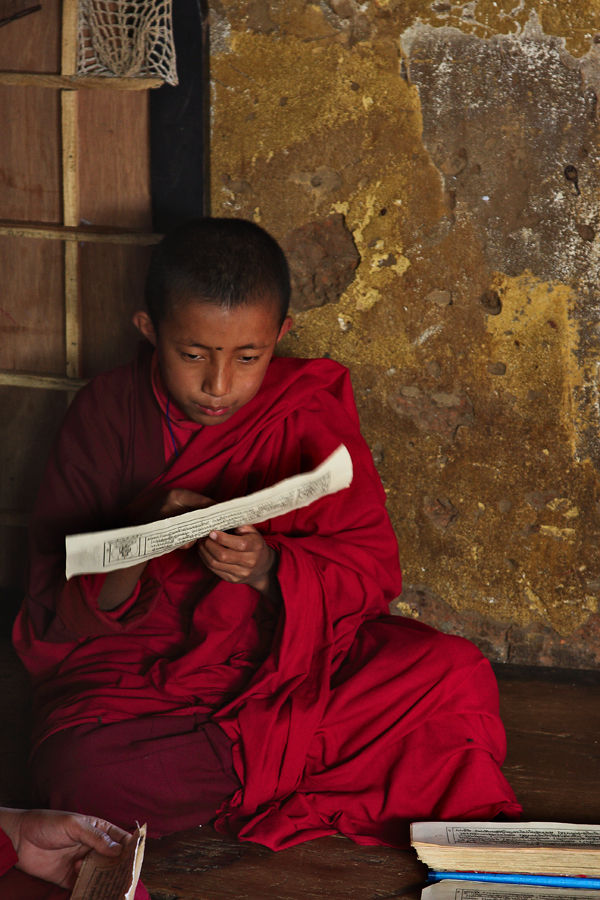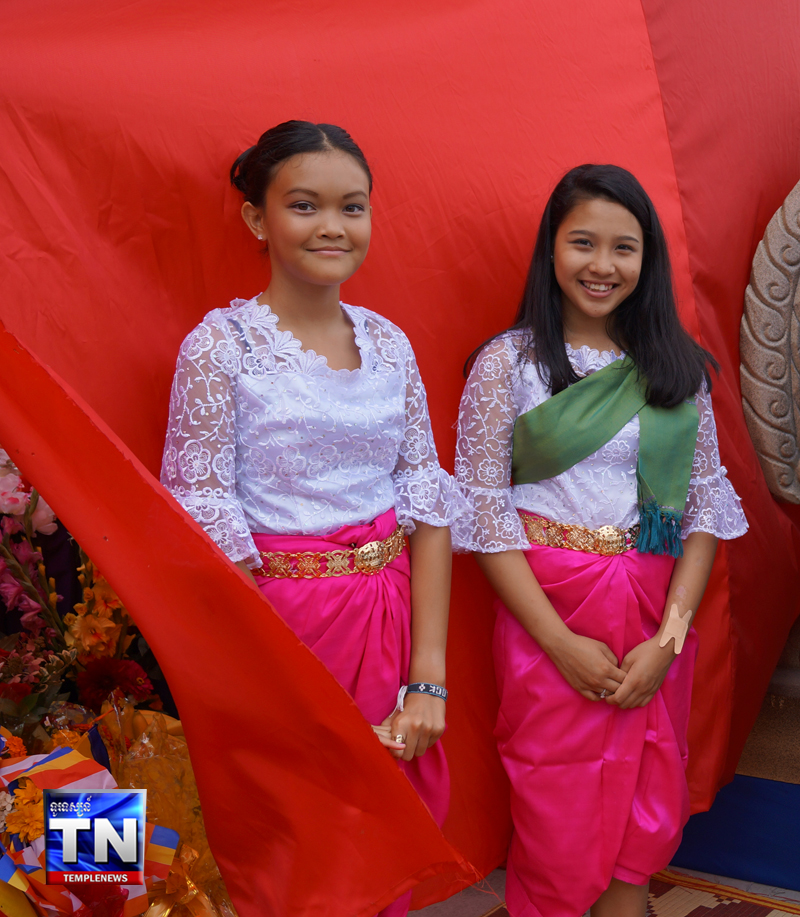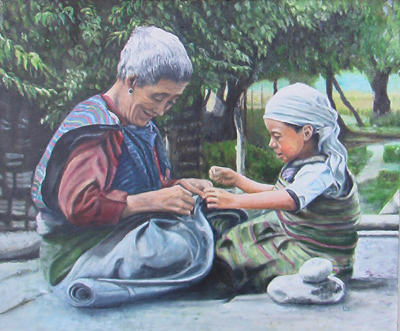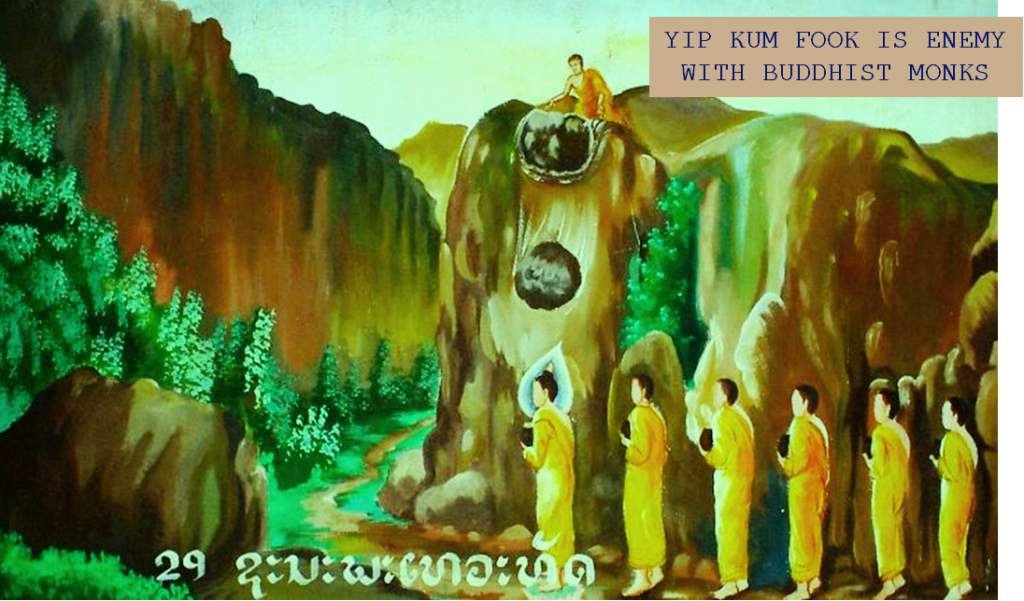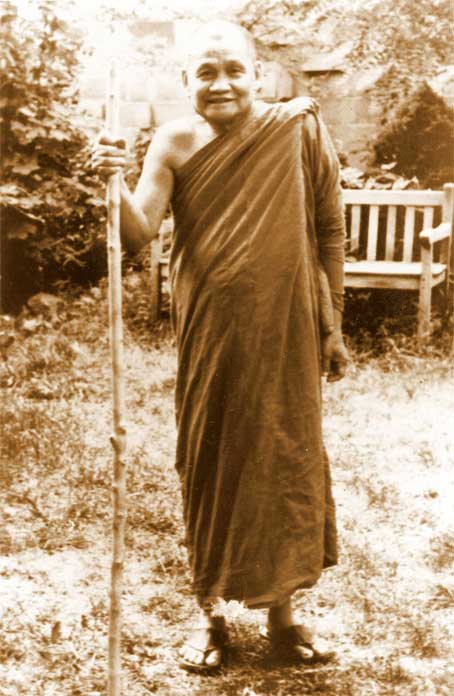Kneeling in the Snow
Transcribed talks by Ratnaghosa
Talk two of six on patience or kshanti
The title of this talk comes from an image that stuck in my mind after reading a book several years ago. I don’t recall the title of the book now. It was written by a Dutch man and was about his experiences of living in a Zen monastery in Japan. One of the things he mentioned was the tradition of making newcomers wait outside for a few days as a sort of test of their aspiration and commitment to join the monastery.
They would have to hold themselves in a particular position, probably more like squatting than kneeling, and just wait. Sometimes the Abbot would send someone out to chase them away.
This was a compassionate act to give them respite from their uncomfortable position, although the novices wouldn’t necessarily know that. So if they really wanted to join the monastery badly enough, they would just wait – kneeling in the snow – as I’ve put it (perhaps fancifully). They would be patient.
Can you imagine the dark, angry, resentful thoughts that might assail you if you were put in that position? Even if you knew it was a ritual of waiting – you would still find it hard to put up with. So the ability to exercise patient endurance was seen as a necessary prerequisite for monastic life. It’s as if the Zen monks are saying “If you don’t have patience, if you can’t endure, well, don’t bother, because you won’t get very far”.
So this patient endurance is Kshanti, or at least an aspect of Kshanti. And as we can see from the example, it requires effort. It requires energy to be patient and to endure. It also requires positive emotion. Without positive emotion the aspiring monk would simply think that the Abbot hated him and he would go away disillusioned, despondent and resentful. Similarly, without positive emotion we may think that the spiritual life is just too much, that other people are making it impossible for us, or that we don’t have what it takes. So we need energy and positive emotion, and both of these are aspects of patience and are developed through the practice of patience.
The alternatives to patience in the spiritual life are frustration, anger and waste of energy. By trying to force ourselves to grow we hinder our growth. If we try to force others to change we prevent them from changing. Patience is needed to further our own spiritual growth and to help others to grow.
This does not mean a lack of effort, in fact it means great effort. Patient effort, enduring effort, persistent, consistent effort is greater, more noble, than the violent effort of frustration and anger. And patient enduring effort is also more successful. This sort of effort, the effort that persists day after day, the effort that persists during good times and bad times, is an effort that understands and uses the law of karma. Actions have consequences. Skilful actions have beneficial consequences. Patient, enduring effort in skilfulness of body, speech and mind brings about spiritual progress.
Patient, persistent effort in ethics, meditation and study brings about spiritual growth. Patience is a Perfection (paramita) because it is an aspect of Reality, an aspect of Wisdom. The Wisdom of Enlightenment is expressed in the concept of the law of conditionality. The law of conditionality states that everything arises in dependence on conditions. Spiritual progress too arises in dependence on conditions, and in the absence of those conditions it does not arise. We need to patiently and persistently create and put in place the conditions for spiritual growth to arise. This is in accordance with the law of conditionality.
If we try to attain spiritual insight in the absence of the right conditions we will more likely achieve a headache or frustration. What are the right conditions for spiritual growth then? There are two aspects to the correct conditions for spiritual growth. There is the inward-looking aspect that aims at self-knowledge and psychological integration through ethical practice, through self-questioning, through reflection and meditation and through internal dialogue.
There is the outward-looking aspect that aims to overcome the illusion of a separate self-hood, the illusion of ego identity, through ethical practice, through friendship, co-operation and communication. There needs to be a constant movement between going deeper into the inward-looking aspect and being ever more expansive in the outward-looking aspect.
This is the creative tension of the spiritual life which eventually leads to a transcendence of inward and outward. Through the persistent effort to gain a deeper and more honest self-knowledge and at the same time be in more generous and open communication with others, we create the conditions for transcendent Insight to manifest in our experience. So we have to continuously make an effort in these two directions, the inward and outward, if we want to make progress. We have to meditate every day, steadily and persistently and patiently working on our minds to change unskilful mental states into skilful mental states. We have to practice generosity constantly in our actions and words and thoughts, always bringing ourselves back to the spirit of generosity when we gravitate towards selfishness and fear.
Patience, then, is necessary if we are to progress spiritually. We have to exercise patience towards the natural world, towards ourselves, and, of course, towards others. So let us look at these three areas now and at how to develop patience in relation to them. In the Bodhicaryavatara (the Guide to the Bodhisattva’s Way of Life) Shantideva says “There is nothing which remains difficult if it is practised. So, through practice with minor discomforts, even major discomfort becomes bearable. The irritation of bugs, gnats, and mosquitoes, of hunger and thirst, and suffering such as an enormous itch: why do you not see them as insignificant? Cold, heat, rain and wind, journeying and sickness, imprisonment and beatings: one should not be too squeamish about them.
Otherwise the distress becomes worse.”(8) So here we are being exhorted to be patient with the natural world; insects, itches, the weather. Shantideva seems to be saying that we should use these relatively minor things to develop our ability to practice patience so that when it comes to more major and significant things we will be ready. He is also saying that if we don’t practise patience in relation to such things as the weather or itches or insect bites, then we will increase our suffering rather than lessen it.
To put it another way, the more we seek comfort in our lives, the more precious we are about ourselves, the less we will be able to endure any discomfort or hardship, and therefore we create more potentiality for suffering and distress. It has been said that we late 20th century Westerners suffer from the “disease of preciousness”(9), by which is meant that we have little ability or willingness to endure discomfort or hardship. If this is the case, then it is bad news for our spiritual development. The spiritual life is not easy. It requires discipline and an ability to endure suffering and distress.
Change produces discomfort and if we shy away from discomfort we will shy away from change. We will “squander our pain”, to paraphrase Rilke. (9) Hopefully for those of us who are practising Buddhists, it is not quite so bad, and we understand the need to sometimes “suffer into consciousness”. (10) We can train ourselves to be patient in the face of discomfort by practising patience in relation to the natural world – especially perhaps the weather.
The glorious variety of the English weather gives us a great opportunity. Let’s hope we don’t waste it in complaining and comfort seeking. Of course, it’s not just the natural world that presents us with opportunities to practise patience. There are lots of minor irritations that occur all the time in city life which we can choose to respond to with anger or with patience – delays on public transport, the till closing down in the supermarket or post office, power cuts, burst water mains, and so on. Just this morning we had no hot water upstairs because our boiler broke down. So there are all sorts of minor difficulties that we can use as a way of training ourselves to be patient.
The second area in which we need to practise patience is ourselves. We need to be patient with ourselves. This means being patient with our bodies – with illnesses and the process of aging. It also means being patient with our spiritual progress. Because we have a body, we are prone to illness, aging, and eventually death. This is how it is. Sometimes when people are ill they feel very sorry for themselves and want a lot of sympathy.
It is as if they had received an unjust punishment. But illness goes hand in hand with having a body, there is no escaping that, and we need to be patient and forbearing in relation to this fact of life. We should also be truthful. I think sometimes people are prone to exaggerate their suffering and illnesses in order to gain sympathy. Not every headache is a migraine. Not every cold is influenza. We need to continue to be truthful, in the sense of factual accuracy, even when we are ill. It is of course important to look after ourselves and to alleviate suffering where possible, for ourselves and others.
It is also important to let others know when we are unwell so that they can help if necessary. But we need to be patient with the course of nature and not childishly petulant. Illness is not a moral retribution or punishment, it is a physical phenomenon and therefore the question of justice or injustice doesn’t enter into it. Whether we are deserving or undeserving is irrelevant. You could say that nobody deserves to be ill.
The same applies to the process of aging. We can refuse to accept it and fight against it. We can expend large amounts of energy, time and money trying to maintain our youthfulness. We can be extremely careful about what we eat and when we eat it. We can take the right vitamin and mineral tablets. We can wear the right clothes, get the right kind of haircut, and go to even greater lengths to stay young. But we will grow old and we will die.
It is in the nature of natural things to go through the cycle of birth, decay and death. So as we start to experience our bodies deteriorating we need to accept the fact of aging and patiently amend our lifestyle and outlook so that we can grow old gracefully. After all there is a lot to be said for growing old. Older people have gained experience and therefore the opportunity for wisdom. Older people are less at the mercy of their physical appetites and therefore have a better chance of attaining tranquillity and equanimity.
When you are older it is less important what other people think of you and therefore there is a great opportunity for your uniqueness and individuality to flourish. As for death, well from a Buddhist perspective the dissolution of the body is simply yet another opportunity for the liberation of consciousness and nothing to be feared. The worst that can happen to us is that we will be reborn and if we play our cards right, so to speak, and set up the right conditions and tendencies in our lives, then being reborn may not be so bad – it may even be better than this time around.
So we need to practise patience in relation to our own bodies, our illnesses, our aging and our inevitable death. We also need to practise patience in relation to our spiritual progress. We need to be patient with our meditation practice and patient with our friendships. Sometimes we hear people say “I’m not a good meditator”. In fact I’ve heard myself say it! Usually what we mean is that we are not having strong experiences of dhyana, we are still working with the hindrances. So the question is, what is a good meditator? What are the distinguishing characteristics of a good meditator?
A good meditator is someone who meditates regularly and who makes an effort in meditation. Meditating regularly means meditating at least once a day for a minimum of twenty minutes. Making an effort in meditation means making an effort to transform unskilful mental states into skilful mental states and making an effort to return to the object of concentration when we notice our distraction. A good meditator, then, is a patient meditator, one who is consistent and persistent. Developing spiritual friendship also requires patience.
There isn’t really a point at which you can say “Now I’ve developed this friendship; no more effort is required”. Spiritual friendship is a process rather than a thing and therefore there is really no end to it. It just carries on deepening. If we want to engage in spiritual friendship we have to be patient with the unfolding process of it, the gradual deepening of trust and growth in honesty and caring.
More generally in relation to our endeavours to live the spiritual life and make spiritual progress there are four points we should bear in mind. Firstly, it is important to develop positive routines or habits and to be disciplined.
Secondly, we should expect difficulties.
Thirdly, we should not be looking for powerful experiences, or even the powerful experience.
Fourthly, it is fundamentally important that we try to develop and maintain an attitude of goodwill towards ourselves. The discipline of a positive routine helps us to be regular and consistent in our practice. It also builds strength and stamina, both physical and mental. It builds strength and stamina because we are not wasting energy. When we set up a positive routine for our meditation and study and so on, we don’t have to engage in any internal debate about what to do next, and in this way we save our energy for getting on with what matters.
The forces of resistance are strong in us and if we give them a chance they will take over. The discipline of a routine helps us to deal with our resistance to practice. The second point to bear in mind in relation to our spiritual progress is that we can expect difficulties. Perhaps we could go even say that we should not only expect difficulties, but we should welcome them.
The difficulties we experience in the spiritual life are often a sign of progress, of greater awareness and greater ethical sensitivity. When we embark on the spiritual life, the life of self-transformation, we can expect to experience difficulties because only part of us wants to progress spiritually.
For a time that may be to the fore and carry us along nicely. But then we become more conscious and frequently what we become more conscious of is the parts of us that don’t want to change. We become aware of our resistance to spiritual growth and spiritual practice. We become aware of internal conflict. And sometimes part of that internal conflict gets projected outside on to other people or on to the situation we live and work in.
And so our internal difficulty becomes an external difficulty too, and the spiritual life begins to feel painful and we wonder what we are doing. Why are we putting ourselves through all this? After all, we took up meditation because we wanted to be happy and relaxed.
And so, thinking in this way we fail to see the positive side of our difficulties; we have become more conscious, we have had a measure of success. If we carry on through our difficulties we will eventually get a clearer perspective and come to a realisation of the real significance of difficulties in the spiritual life. Although I’ve said we should expect difficulties, it is much more in the spirit of Kshanti as patience to have no fixed expectations at all. Sangharakshita has said, “Fixed expectations are the antithesis of patience”.
(12) Really, what is required of us is that we are prepared for every eventuality, that we learn to live happily with impermanence and change. Change often does seem to be at the least an inconvenience, and can even be traumatic. To change is to move beyond current attachments, and that is difficult, because our attachments are what give us security and stability. Through our spiritual practices we are developing an inner stability and security – that is what metta is. The third point to bear in mind in relation to our spiritual life is that we should not be looking for powerful experiences.
This is a wrong way of thinking about the spiritual life and constitutes a hindrance to spiritual progress. It is an acquisitive, even consumerist attitude and has more to do with our mundane preoccupations than with anything of spiritual significance. Sangharakshita speaks about this in his seminar on The Ten Pillars of Buddhism. He says: ”You experience something as powerful when there’s a great discrepancy between it and you.
But on the higher spiritual levels that isn’t the case, you can’t have that sort of experience. To take an example: if you’re wallowing on the kama-loka plane, and suddenly there supervenes a dhyana type experience, you experience that as dramatic or even powerful, because it is so different from your normal state.
But if, say, while you’re in the third dhyana you experience the fourth it doesn’t have that sort of impact because there isn’t that sort of discrepancy between the third and the fourth dhyana. So what a lot of people are after is the powerful type of experience, that is their model for a valid or higher experience, something that really knocks you off your seat almost, knocks you off your feet, something violent almost. This is how they think of it.
But actually the more advanced you become in spiritual life, the less likely you are to experience things in that sort of way. But I have been rather interested, not to say rather amused sometimes, by the extent to which people talk of powerful experiences. They’ve almost a hankering after powerful experiences.
And in Tibetan Buddhist circles one sometimes hears people saying things like “Oh, it’s a very powerful initiation” or “such and such lama gives very powerful initiations” or “he belongs to a very powerful line” et cetera, et cetera. I think this is quite revealing. It’s as though they don’t want to rise above their present level, they want to just be as they are or what they are, and then have the experience come along from outside and just hit them, and give them some sort of transcendental shock. This seems to be their sort of model of spiritual experience very often.”(13) So you may have strong experiences in meditation from time to time and they may give you faith that there are states of consciousness beyond what you usually experience, but don’t get distracted by these experiences or start to chase after them. What is really important is whether you are kind and generous and truthful the rest of the time and whether your relations with others are becoming more friendly.
Strong or powerful experiences in meditation are an occasional by-product of the spiritual life for some people. They are not what the spiritual life is about. What is significant in the spiritual life is what sort of person you are becoming and how you behave, especially how you behave towards other people.
The fourth point to be borne in mind in relation to following the spiritual path is that we should develop and maintain an attitude of goodwill towards ourselves. An attitude of goodwill towards ourselves means being patient with ourselves. It means working from the assumption that we are fundamentally alright.
Too often people seem to have an assumption that they are basically or fundamentally worthless. This is often unconscious even, but it nevertheless affects behaviour and relationships. So we need to have an attitude of goodwill towards ourselves, an attitude of friendliness, of metta.
This is vitally important in the spiritual life. When you have high ideals and high standards, you will find yourself often falling short of them and when you do fall short you can either berate yourself for being a useless person and get into a self-deprecating, self-hating mood or you can acknowledge your failing, confess what needs to be confessed and resolve to do better next time. You are inevitably going to fall short of your ideals again and again. You need to be patient and with an attitude of goodwill towards yourself, just keep on making an effort. You cannot force-grow yourself.
Plants that are force-grown are the weakest plants. In the spiritual life we want to bring all of ourself along on the path. We want to become a sturdy, robust individual, capable of coping with the world and capable of handling the experience of the Transcendental Insight. We don’t want to create a beautiful, effete, head-in-the-clouds sort of person who is easily overwhelmed by the slightest whiff of a setback, like some hothouse rose.
The foundation, the grounding for a sturdy, robust individual is a strong feeling of self-metta, a strong experience of goodwill towards oneself. So we can exercise patience towards ourselves by being realistic about illness, aging, and death, and by applying steady effort in our spiritual life with an attitude of self-metta.
As well as exercising patience towards the natural world and towards ourselves, we must also exercise patience towards other people. According to the Dhammapada, “patience is the greatest asceticism”. (14) This was quite a statement to make in ancient India where people practised all sorts of strange and severe austerities, starving and mutilating themselves in the hope of spiritual attainment.
So when the Dhammapada says that patience is the greatest asceticism, it is saying that it is both more difficult to practise than mortification of the flesh and more efficacious than any other austerity. This probably applies particularly to patience towards other people. Being patient with others means particularly being patient with the faults and failings of others. It also means being patient with difference.
Sometimes others are just different from us and we interpret that as a failing on their part and get annoyed with them. The main reason why it is so difficult to be patient with others is because we experience ourselves as the centre of the universe. And from this standpoint we can get hurt and upset and angry when others don’t seem to be going along with it.
So in order to develop patience towards others we need to get beyond selfishness and begin to see that real self-interest includes the interests of others. This requires imagination and a willingness to question our anger and indignation. Imagination is a prerequisite for the spiritual life. Without imagination we would not be able to conceive of a higher ideal or of the possibility of changing ourselves. Imagination is also essential to the development of metta and compassion. It is through our ability to imagine what it is like to be another person that we can empathise and sympathise with others.
We all have imagination. We daydream, we fantasise, we tell stories, we exaggerate, we fall in love, we save money; all of these require imagination. To consciously use our imagination in order to develop a greater empathy with others is perhaps more rare. But it is what we need to do if we are to progress spiritually. And it is certainly what we need to do in order to develop greater patience in our relations with others.
There is a story in the Pali Canon where the Buddha comes upon some young boys tormenting a crow with sticks, just the sort of thing young boys do. The Buddha doesn’t chase them away. Instead he gets them to use their imagination. He asks them how they would feel if they were treated like the crow. They say of course that they wouldn’t like it because it would be painful. So He explained to them that the crow too feels pain and doesn’t like to be beaten.
And understanding this they leave the crow alone. (15) Just like those children, we too need to imagine beyond ourselves and not just in terms of suffering but much wider and deeper than that. We have to use the experience of our own humanity, even the experience of our own selfishness, to make an imaginative connection with all humanity. By doing this we prepare the ground for metta to arise. Metta can be seen as understanding.
Understanding is a great antidote to anger. If we can understand why others behave as they do we will be less likely to hold onto feelings of anger towards them. There is a French proverb, “to understand all is to forgive all”.
So if there is someone who annoys us by their behaviour, perhaps we need to get to know them better, to understand why they are like they are. When we see others as we see ourselves we can more easily feel friendliness and goodwill towards them and we can be more patient with them. When we become impatient with others and experience anger and annoyance towards them there is a strong tendency to justify ourselves.
Anger often masquerades as truth. But we should never trust our anger. It is more likely to lie to us than tell the truth. When we get angry with someone or some situation we should make an effort to take our attention away from whatever happened and turn our attention to a questioning of our own response.
Our tendency might be to go over the details of what happened in an obsessive manner and continue to wind ourselves up into fresh feelings of outrage.
But we should question this. We should ask ourselves “Why an I responding with anger?
Is this the only possible response?
Is there perhaps a more creative response? Why don’t I choose a different response? What is behind my anger?
How should I have to change in order to have a more creative response?
Do I want to change? What will the consequences be if I carry on being angry?”, and so on.
By questioning ourselves in this way we can use our anger as an opportunity for gaining greater self-knowledge. We can also create a gap in our experience for a more creative response to arise. In the Bodhicaryavatara Shantideva gives a number of reflections on anger in the chapter on Kshanti. He says for instance: “Having found its fuel, the frustration of my desires, hatred sets in.
Because I undertake what is to my detriment, and omit what is to my advantage, frustration sets in. Thus fuelled hatred consumes me. It is the fault of the childish that they are hurt, for although they do not wish to suffer, they are greatly attached to its causes. I do not want to suffer; but in my confusion I desire the causes of my pain – so why be angry with others when you are the cause of your own pain” He also says: “Why be unhappy about something if it can be remedied? And what is the use of being unhappy about something if it cannot be remedied?”(16) Elsewhere Shantideva reflects on the relation between self and other: “All have the same sorrows, the same joys as I, and I must guard them like myself.
The body, manifold of parts in its divisions of members, must be preserved as a whole; and so likewise this manifold universe has its sorrow and its joy in common. Although my pain may bring no hurt to other bodies, nevertheless it is a pain to me, which I cannot bear because of the love of self; and though I cannot in myself feel the pain of another, it is a pain to him which he cannot bear because of the love of self.
I must destroy the pain of another as though it were my own, because it is a pain; I must show kindness to others, for they are creatures as I am myself…
Then, as I would guard myself from evil repute, so I will frame a spirit of helpfulness and tenderness towards others …
We love our hands and other limbs, as members of the body; then why not love other living beings, as members of the universe?”(16) So by reflecting in this way, by questioning our irritability and anger and by consciously exercising our imagination to develop empathy, we can develop patience towards other people and in the process gain greater self-knowledge and make progress on the spiritual path.
Perhaps I should make it clear at this point that there is a distinction to be made between being patient and being passive. To be patient doesn’t mean being a doormat and allowing others to walk all over you. That would not be consistent with self-metta. Patience can create the gap between feeling and response where we can sow the seeds of spiritual attainment and move towards ever greater self-transcendence.
I will leave the last word with Shantideva, who is very persuasive indeed about the benefits of exercising patience. He says: “Never mind future Buddhahood arising from the propitiation of living beings! Do you not see good fortune, renown, and well-being right here and now? “Serenity, freedom from disease, joy and long life, the happiness of an emperor, prosperity: these the patient person receives while continuing in cyclic existence.”(14)
Notes: 8. The Bodhicaryavatara, translated by K.Crosby and A. Skilton 9. The Supreme Mystery, Cittapala, Padmaloka Books 10. The Duino Elegies, Rilke 11. The Oresteia, translated by R. Fagles 12. Seminar on The Jewel Ornament of Liberation 13. Seminar on The Ten Pillars of Buddhism 14. The Bodhicaryavatara, chapter on Forbearance 15. quoted in The Ten Pillars of Buddhism 16. The Bodhicaryavatara Kshanti
Source: http://ratnaghosa.fwbo.net


